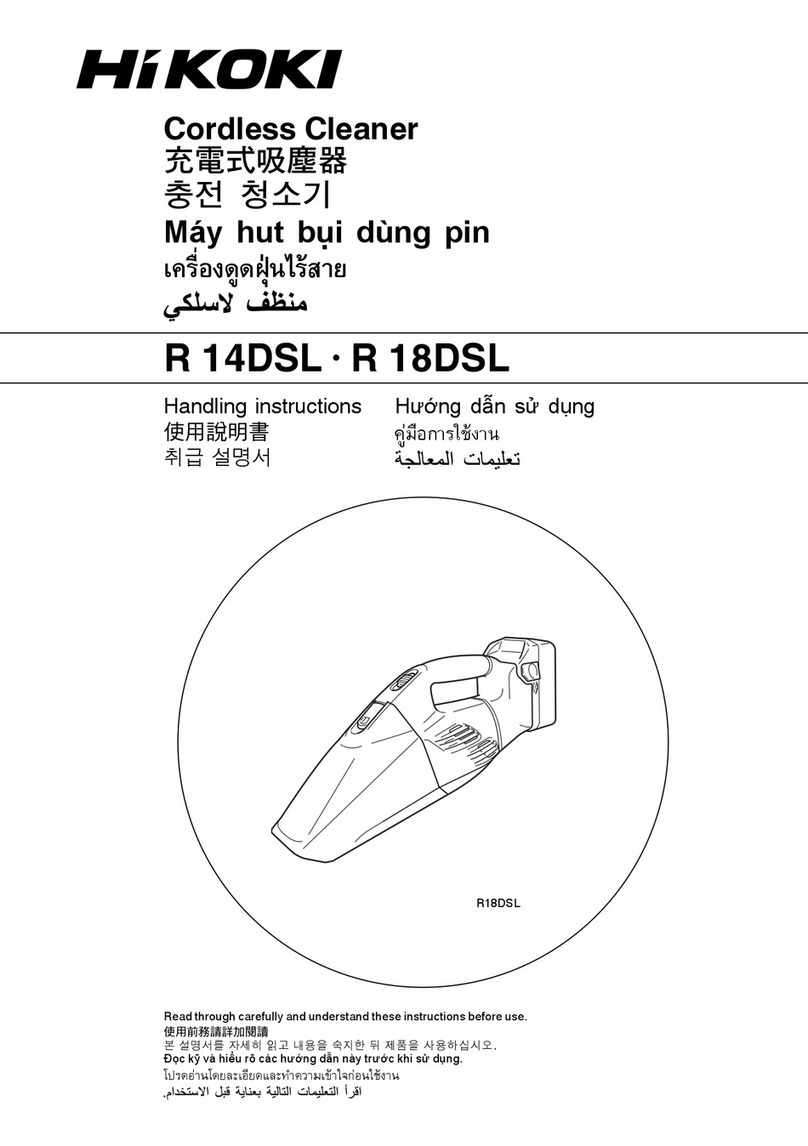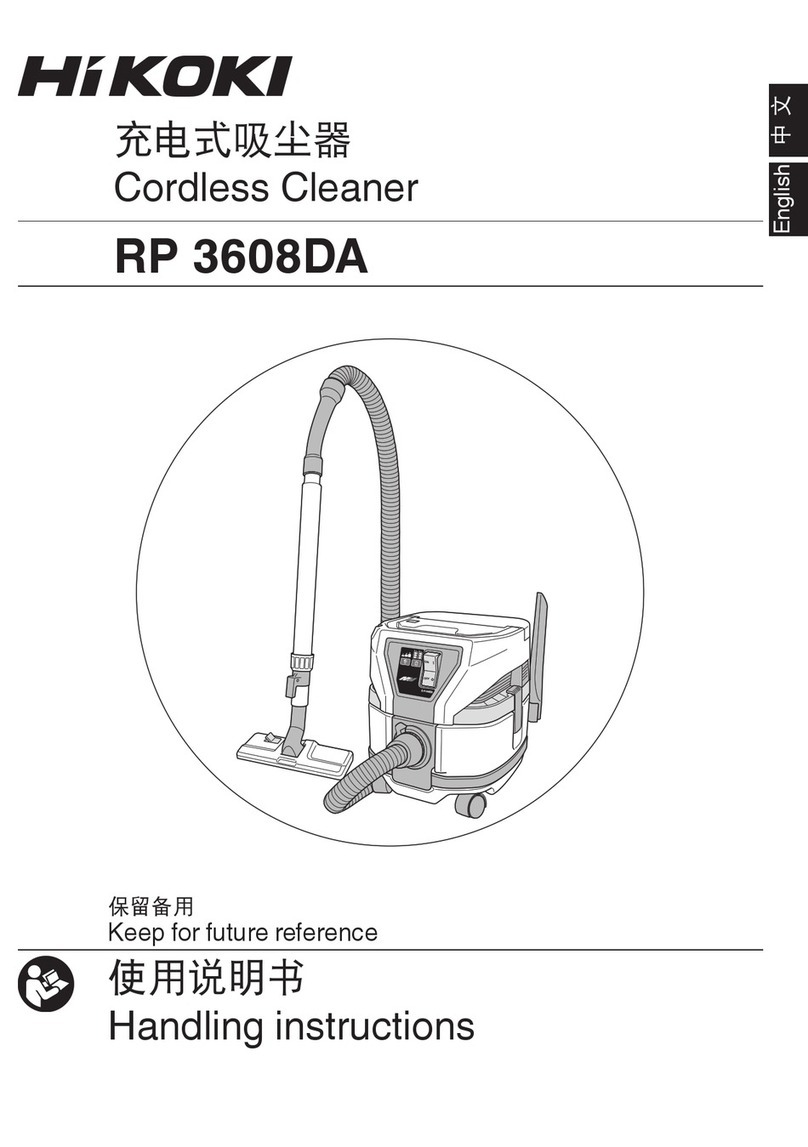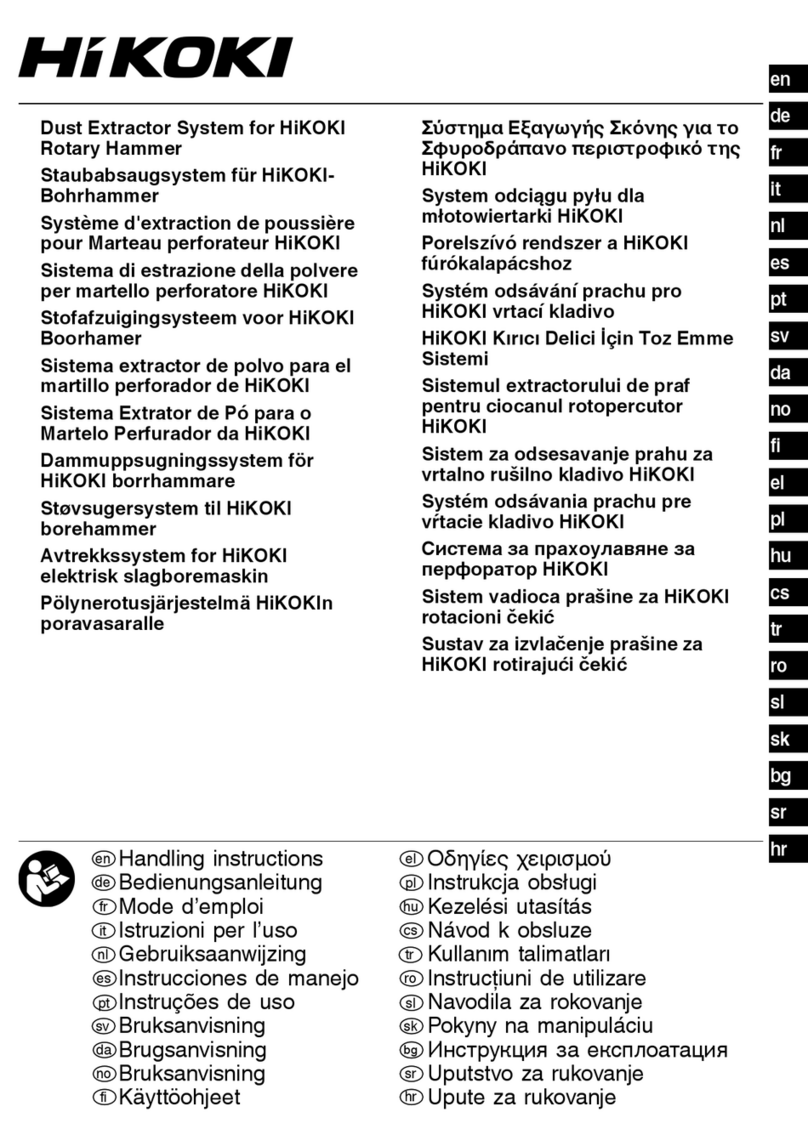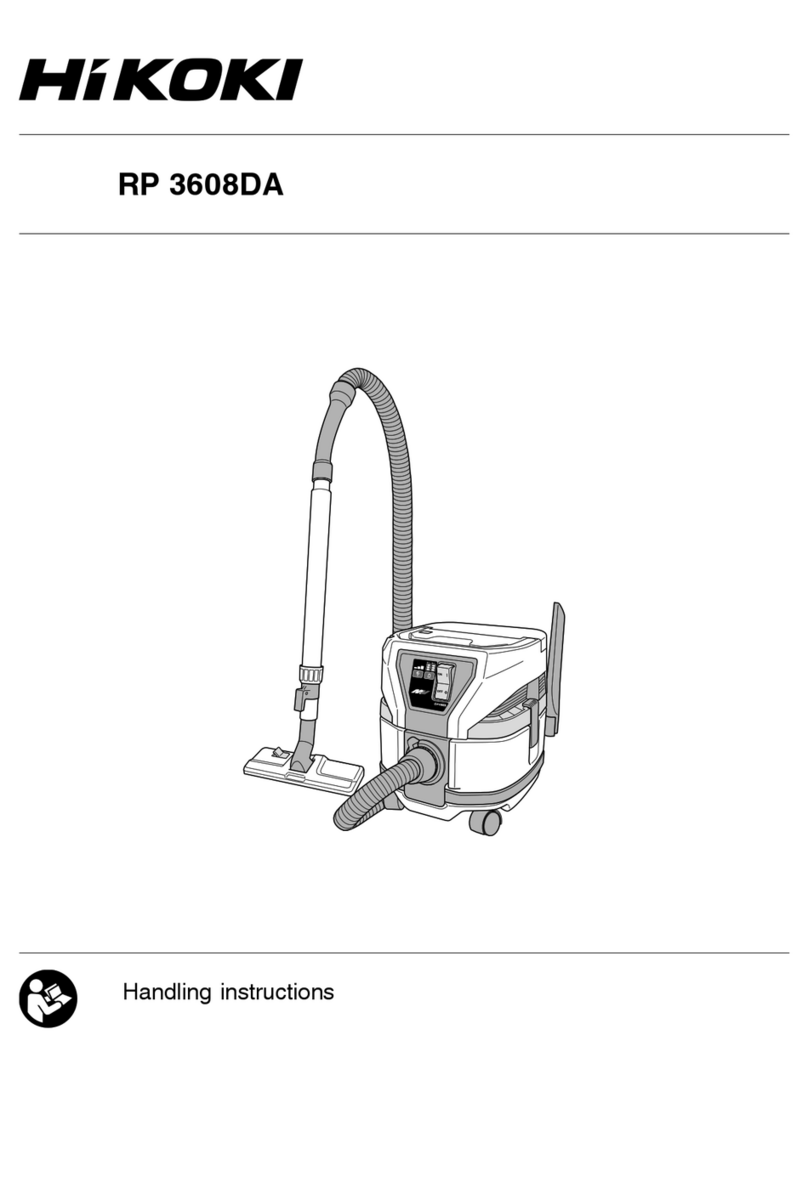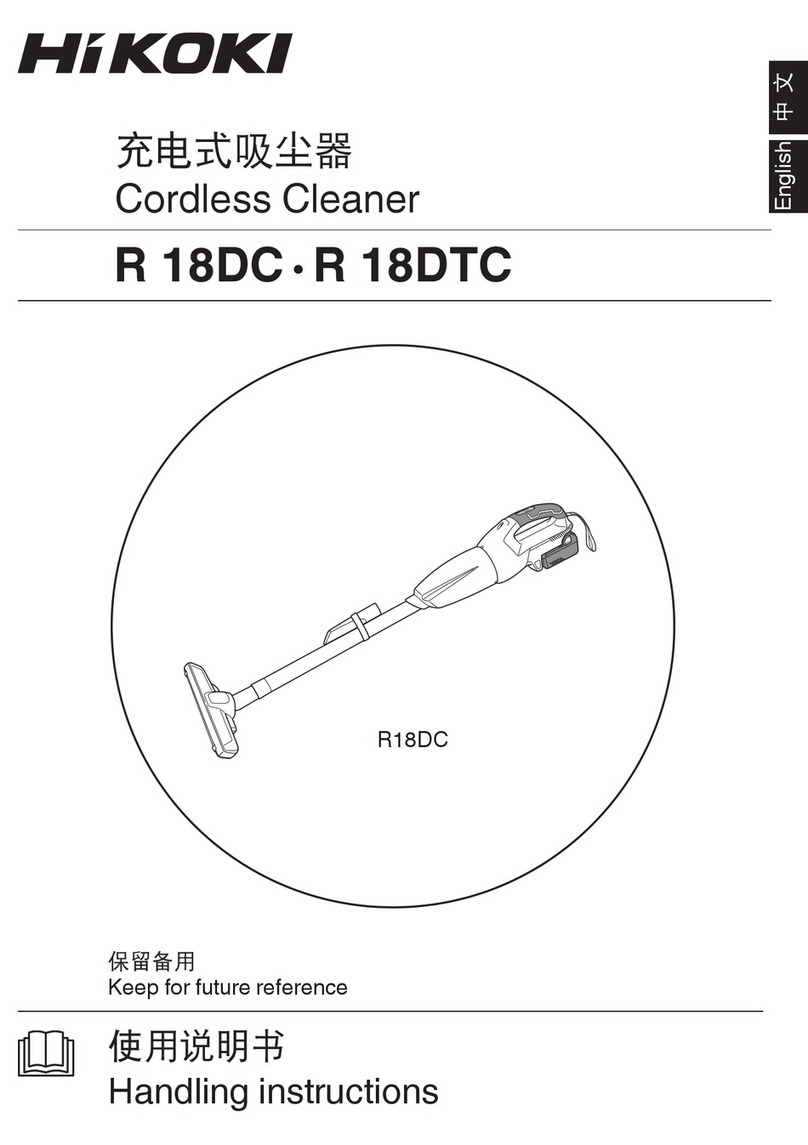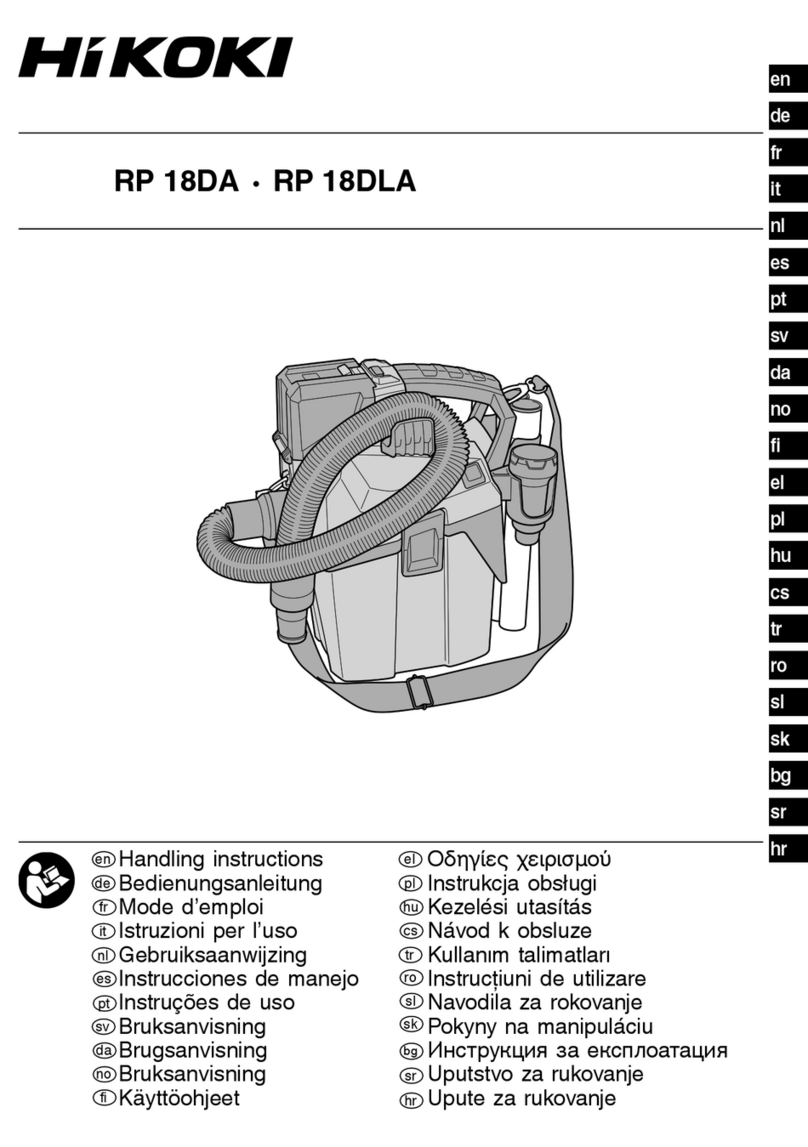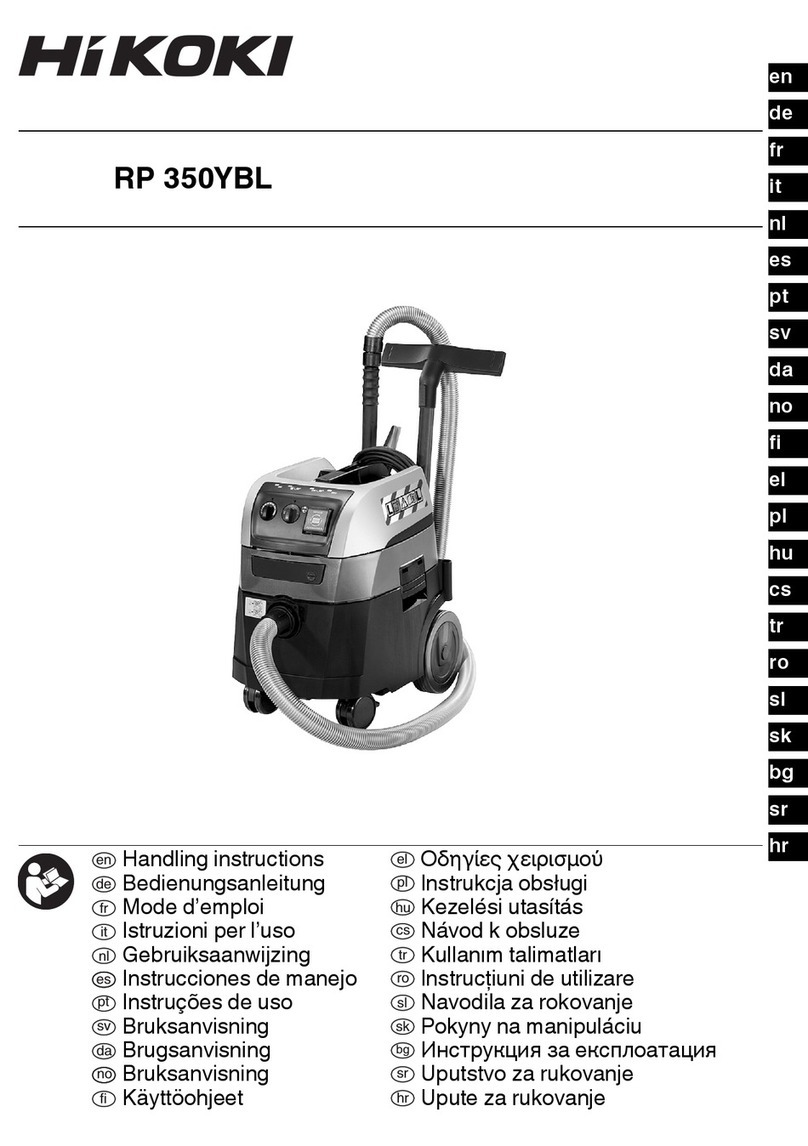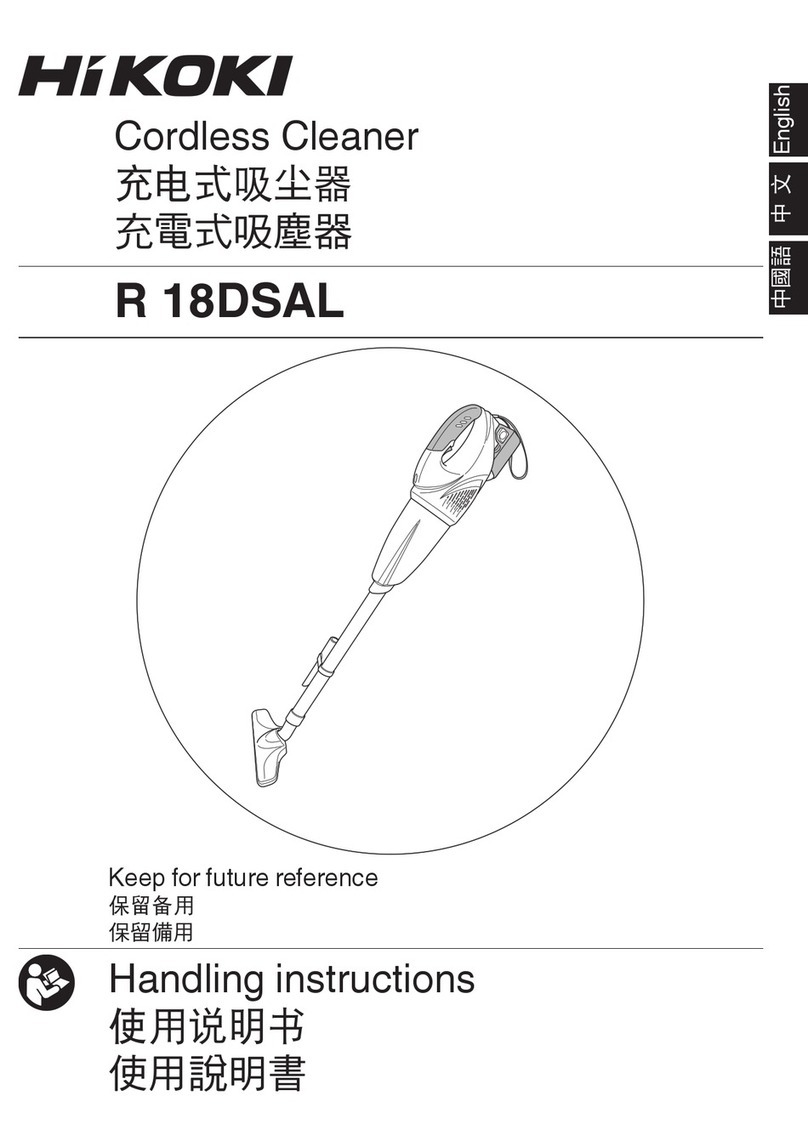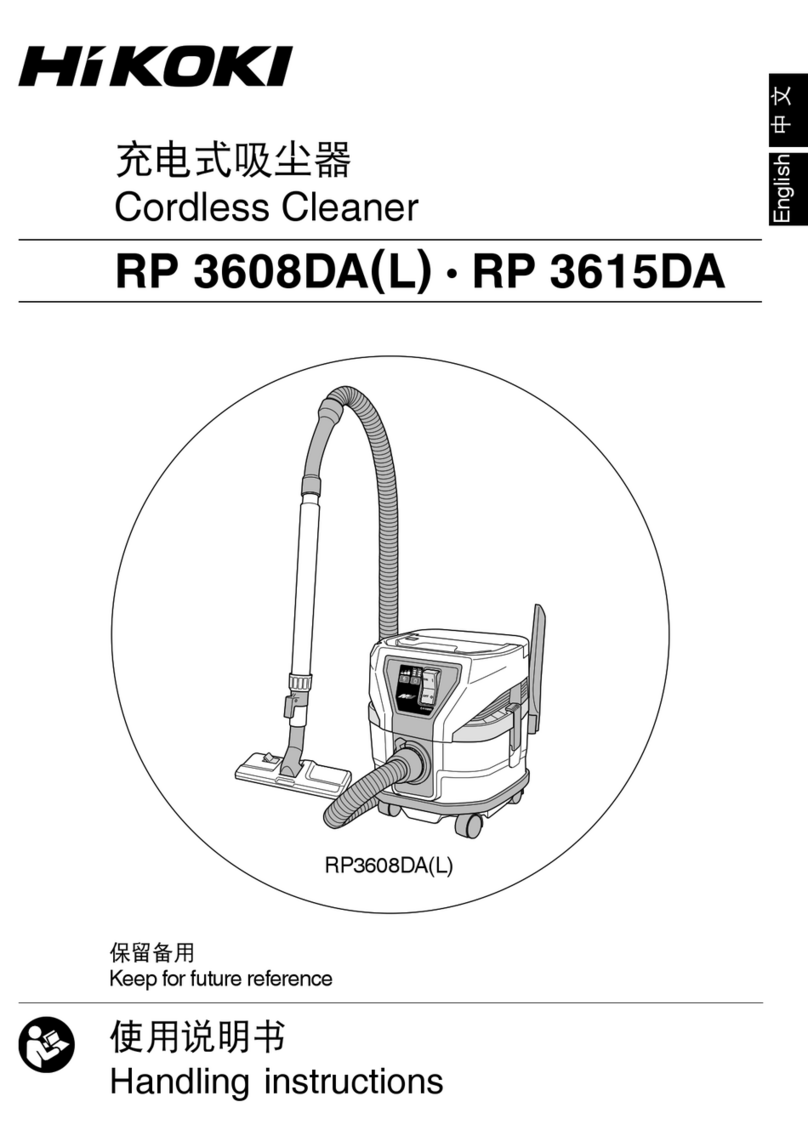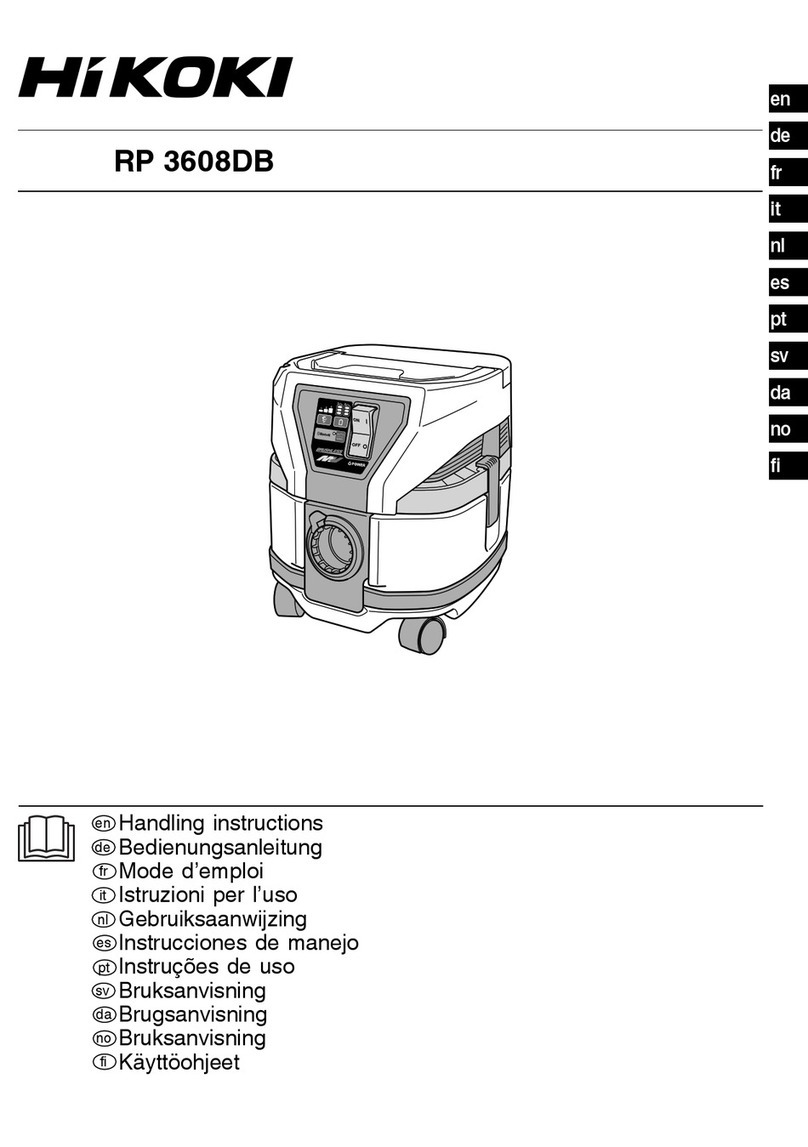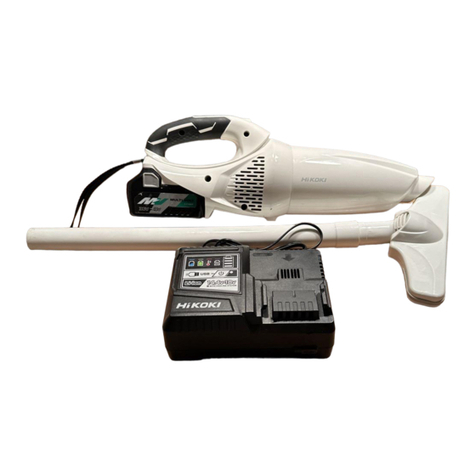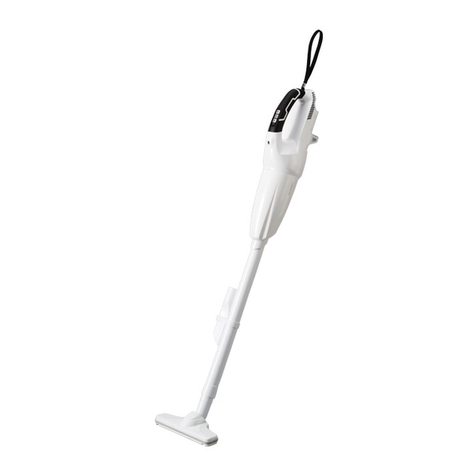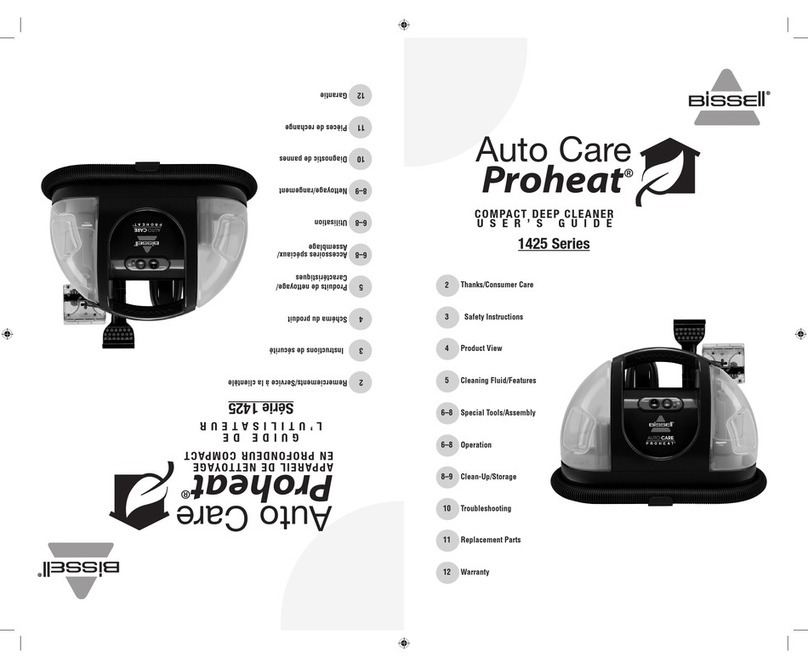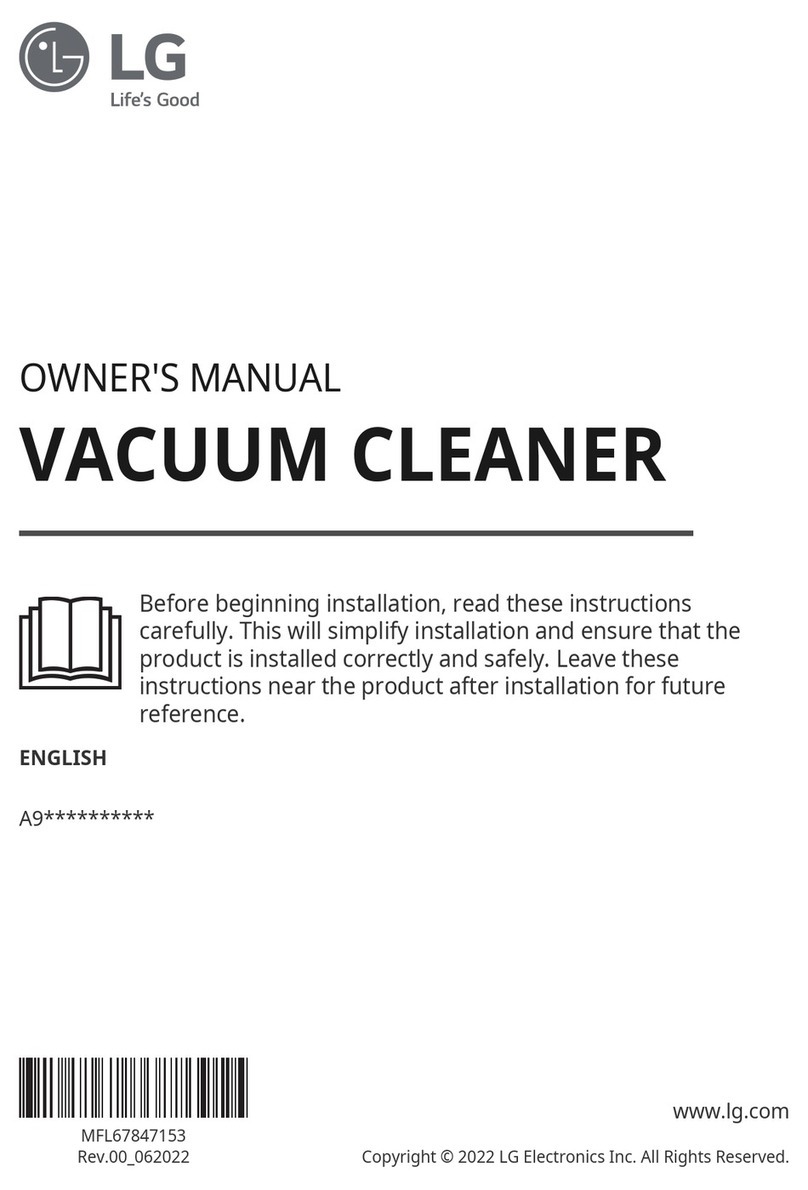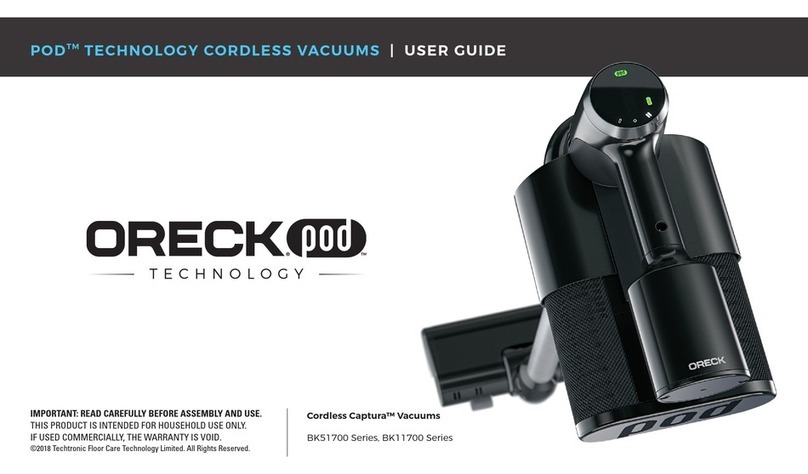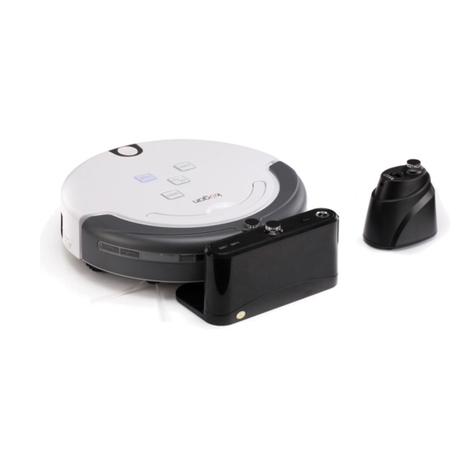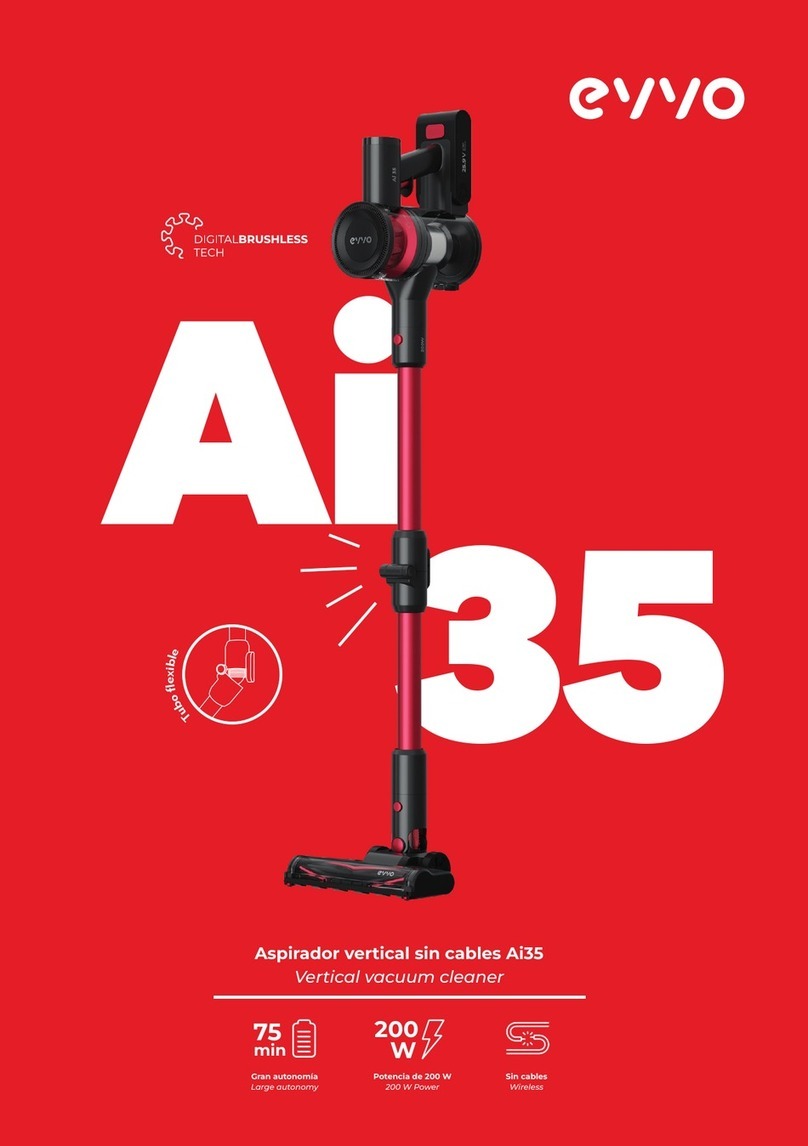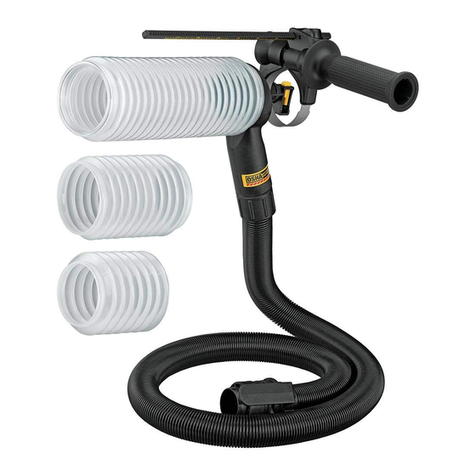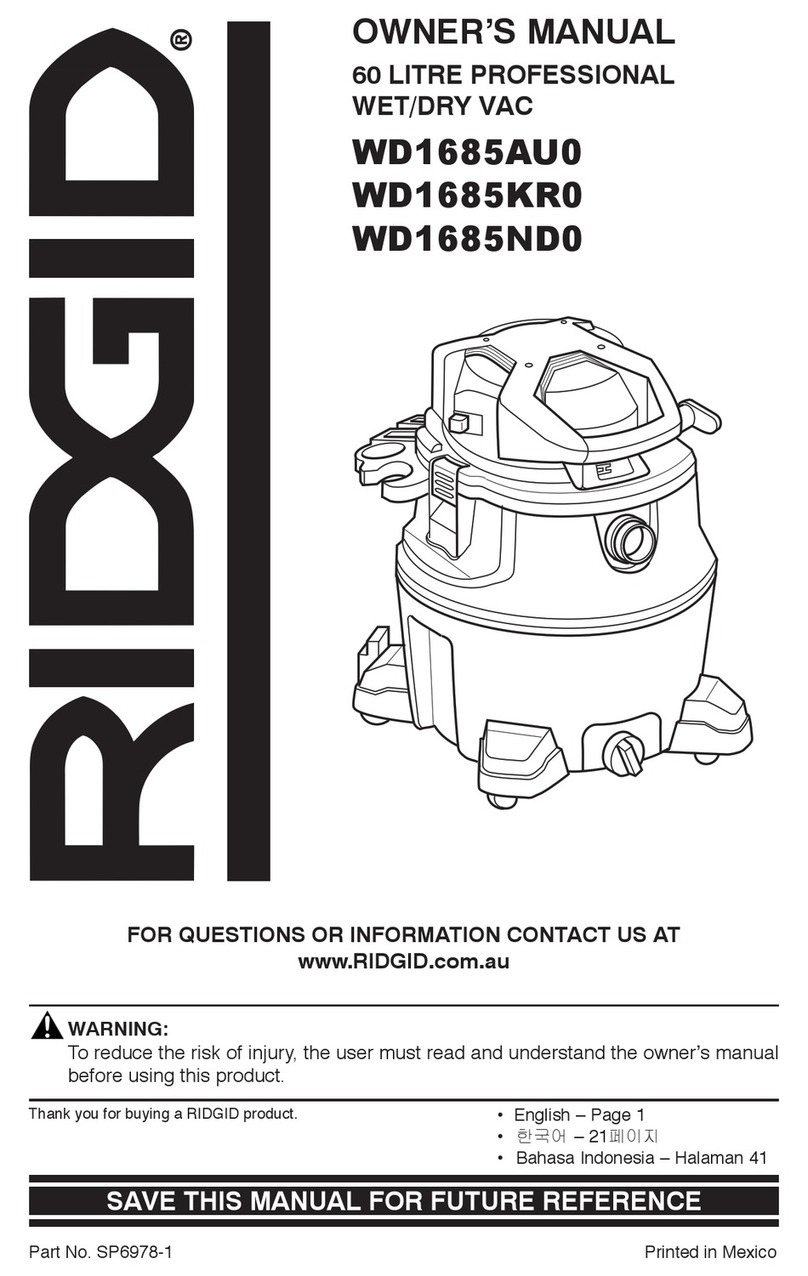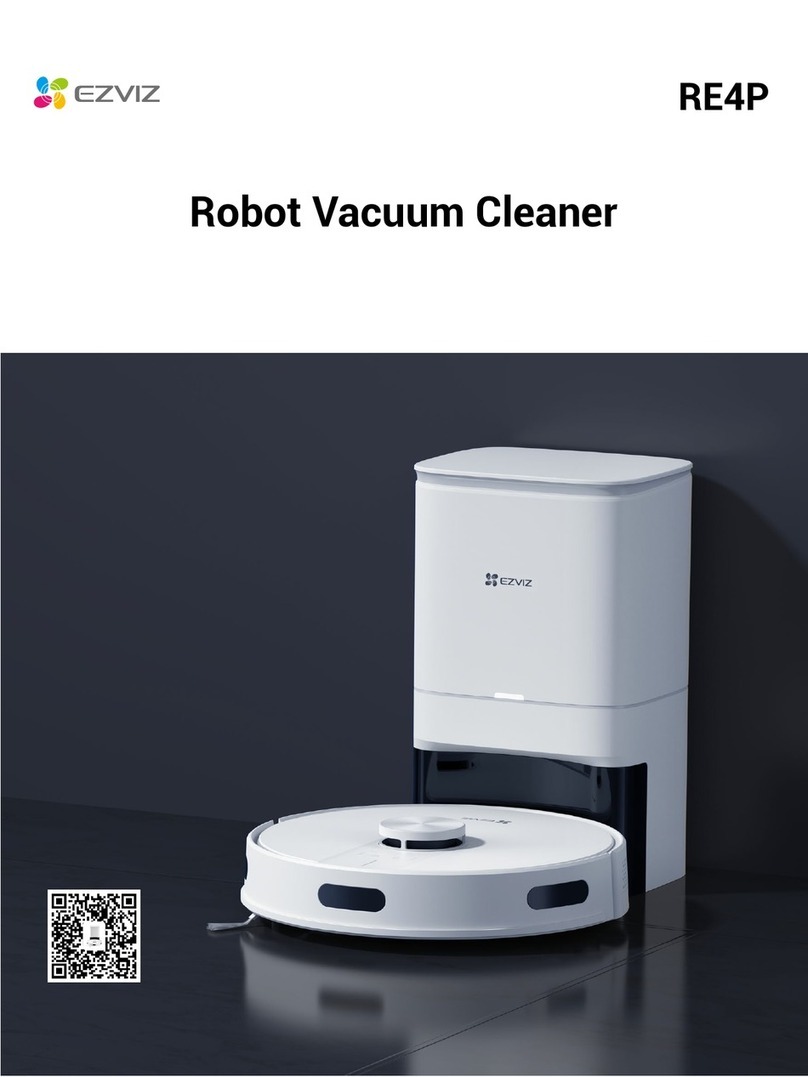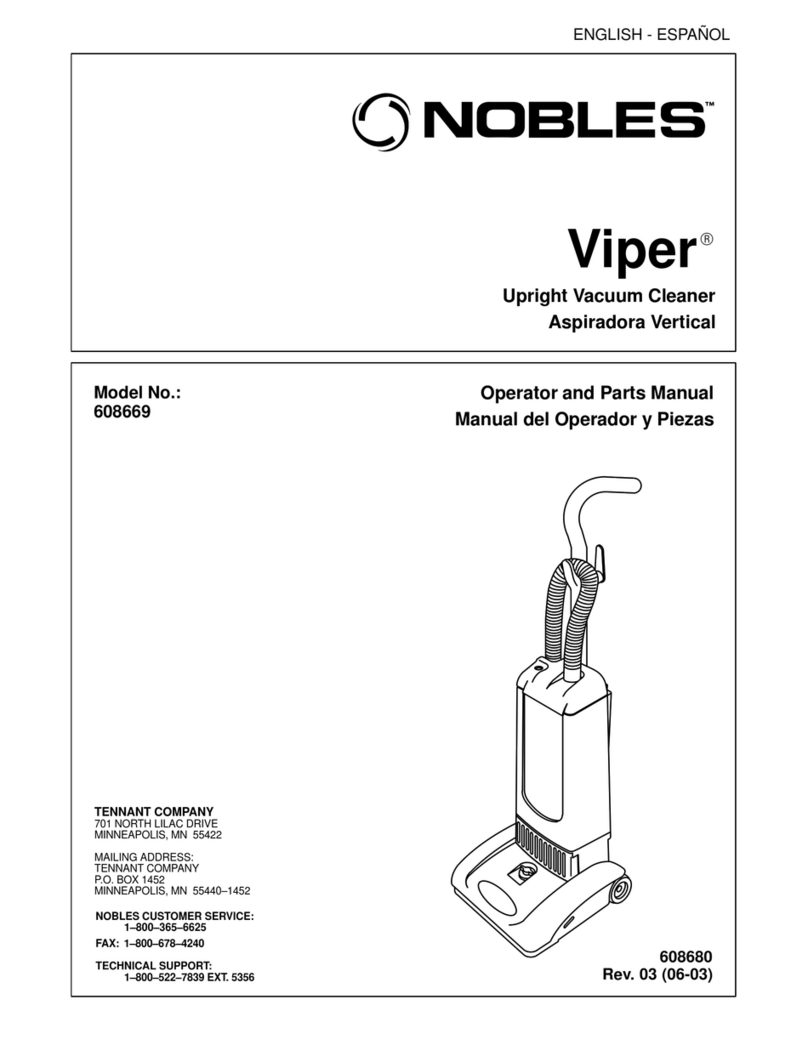
English
7
PRECAUTIONS FOR CORDLESS CLEANER
1. Always charge the battery at a temperature of 0°C – 40°C. A temperature of less
than 0°C will result in over charging which is dangerous. The battery cannot be
charged at a temperature higher than 40°C.
The most suitable temperature for charging is that of 20°C – 25°C.
2. When one charging is completed, leave the charger for about 15 minutes before
the next charging of battery.
Do not charge more than two batteries consecutively.
3. Do not allow foreign matter to enter the hole for connecting the rechargeable
battery.
4. Never disassemble the rechargeable battery and charger.
5. Never short-circuit the rechargeable battery. Short-circuiting the battery will cause
a great electric current and overheat. It results in burn or damage to the battery.
6. Do not dispose of the battery in fire.
If the battery is burnt, it may explode.
7. Bring the battery to the shop from which it was purchased as soon as the post-
charging battery life becomes too short for practical use. Do not dispose of the
exhausted battery.
8. Using an exhausted battery will damage the charger.
9. Do not insert object into the air ventilation slots of the charger.
Inserting metal objects or inflammables into the charger air ventilation slots will
result in electrical shock hazard or damaged charger.
10. Prevent the appliance from sucking in the following: Fire or injury may result.
○
Foaming liquids such as oil, hot water, chemicals or detergent.
○
Generated spark during metal grinding or cutting.
○
High temperature things, such as lighted cigarette.
○
Inflammable substances (gasoline, thinner, benzene, kerosene, paint, etc.),
explosive substances (nitroglycerine, etc.), combustible substances (aluminum,
zinc, magnesium, titanium, red phosphorus, yellow phosphorus, celluloid, etc.)
○
Sharp things, such as nail and razor.
○
Solidification materials, such as cement powder and toner, and conductive fine
dusts, such as metal powder and carbon powder.
11. Set the filter correctly before use. Do not use the appliance without the filter or with
it set in a wrong position, or do not use a torn filter. May cause failures, such as
motor burnout.
12. This appliance is for indoor use. Do not use in the rain. Keep away from water or
oil.
Malfunction may result as this appliance is not waterproof.
13. Do not use the appliance with its suction opening or exhaust opening obstructed.
The temperature of the motor may rise abnormally, causing troubles such as
deformation of parts or motor burnout.
14. Do not operate the appliance when the suction opening is blocked.
The motor may overheat, causing deformation of parts or malfunction of the motor.
00BookR12DAChS.indb700BookR12DAChS.indb7 2019/03/0714:15:382019/03/0714:15:38


